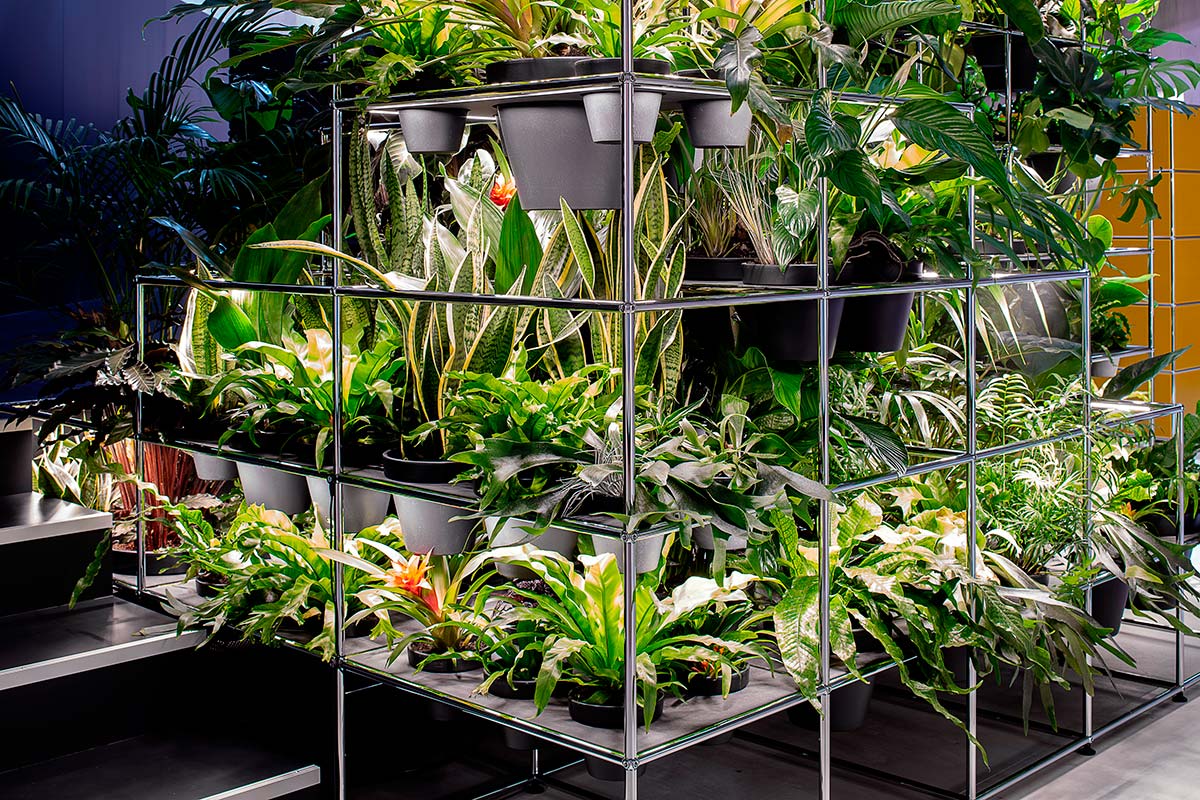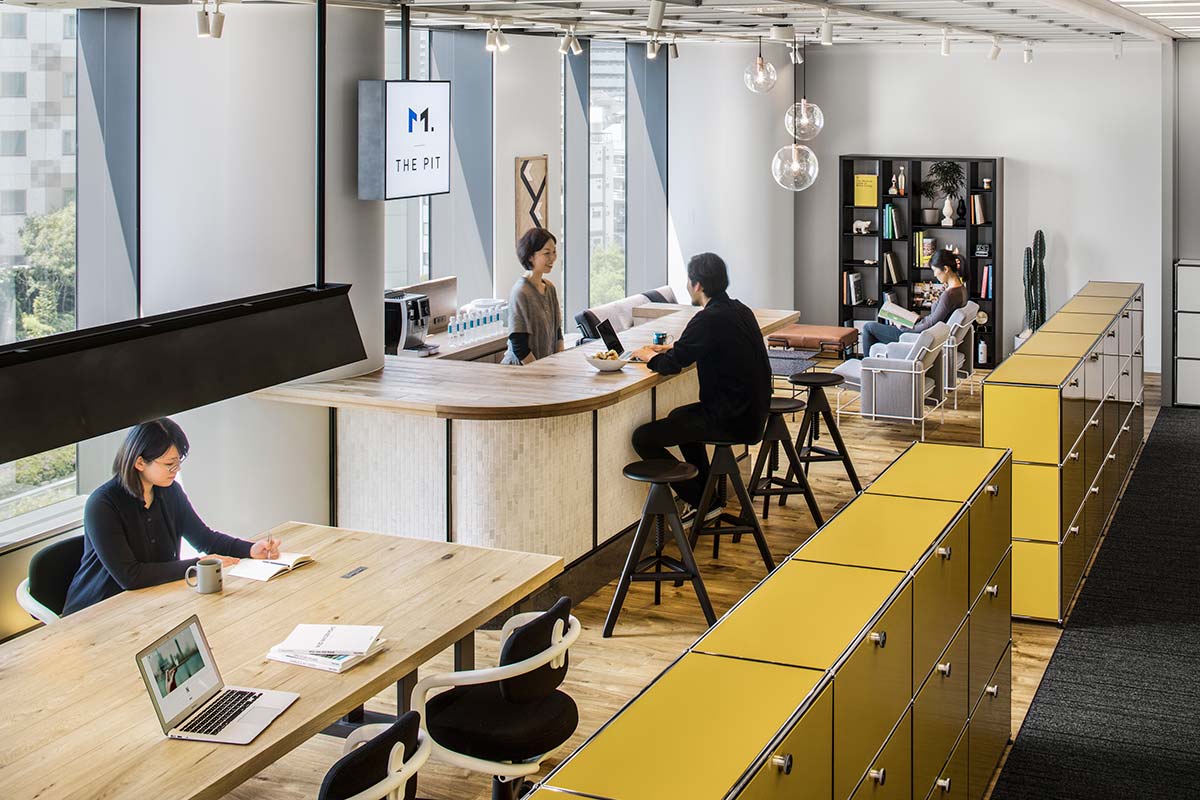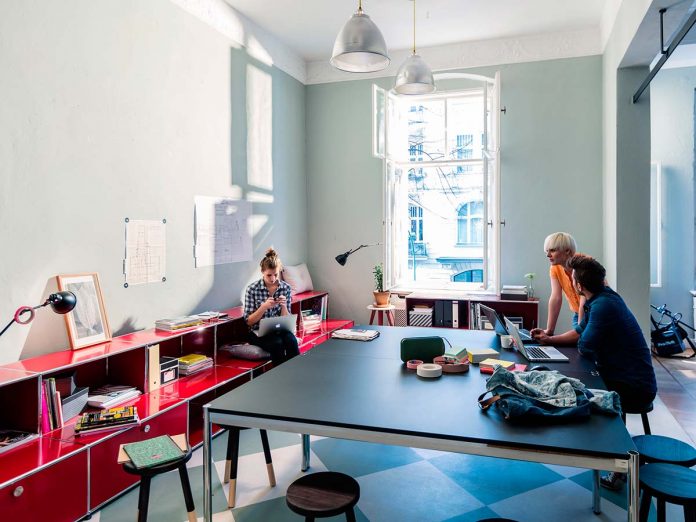USM and UNStudio have been exploring the world of work and its continuous transformation since 2017, from the concept of HomeWork presented last year at the Salone del Mobile, to the project-workshop for the WorkHouse in Wehrmuele, near Berlin, and the installation Making Places created in Milan during the latest Salone to explore the ‘third space’ between home and office, and to understand the conditions that can help human beings to grow, learn, think and interact in the workplace. Alexander Schärer, CEO of USM, and Ren Yee, Senior Architect and Associate Head of Innovation Strategy and Forecasting of UNStudio, share their ideas and experiences with us.

From ‘HomeWork’ to ‘Third Place’: in what direction is the workplace evolving?Ren Yee: Investigating the blurry zone between domestic spaces and the workplace, we have seen that new devices are breaking up our way of working; to an increasing extent, technology is altering our working conditions, just as it is altering us as human beings. The ‘third place’ responds to this type of condition: not home, not office, but a hybrid of the two. We have understood that people want to remain in contact with other people in an informal atmosphere that gives energy, that is stimulating. And they also want to not be moored to a single place, but to utilize multiple sites based on the needs of the moment. For example, I am used to working in many places under different conditions, such as hotel lobbies or cafes, and at times I need to be ‘disconnected’ from people, even if there are people around me. We are seeing a trend towards workspaces that no longer offer a single option, but multiple possibilities based on changing needs and activities.

What is the role of modular design in this ‘third place’?
Alexander Schärer: As we demonstrated in the installation ‘Making Places’ in our booth at the latest Salone del Mobile, the scene has changed today. It is a space for ‘makers’ that does not impose itself on them, but is versatile; the system does not change, but its configuration shifts with the addition of new functions, such as the possibility of cultivating plants (with the metal structure of the USM Haller modular system a special prototype was made, thanks to collaboration with Ecosphere Institute of Graz, ed.) or of having cableless lighting.
Ren Yee: Modular design becomes a very effective and productive tool for architects, because the boundaries are only those of our imagination. Last year, in the ‘HomeWork’ installation, we addressed the theme of furnishings as architecture; this year the concept has evolved to give rise to an ‘architectural object’ in which to create a completely different environment, with divider spaces, an open arena, private and shared places. The modular system is full of potential, and this is why USM has invited us again this year to imagine how it can evolve, while always remaining itself. Besides being architectural, the work environment-object has artistic content; we wanted an installation that would interact with people, with their reflection in the mirror, with the various possible configurations created with adhesives on a long wall, a sort of jungle in which to get your bearings.
There is a very close bond between technology and the work environment: is it maybe too close?
Ren Yee: Besides the single devices, the foundations on which technology is based are changing our idea of work itself. What has to remain essential in our research on working environments, in the final analysis, is the fact that we are living beings. In this moment we are concentrating on the quality of being human, on the conditions that can benefit our sense of wellbeing, our mental and physical health, in terms of what inspires us in our work. These are tangible qualities that cannot be reached by technology, though of course it can help. The true crux of the design issue is to create a space in which we can coexist with technology, keeping it under control rather than working in a space in which we do not want to live, because it has been fragmented by a technology we are no longer able to control.

This is your idea of smart working?
Ren Yee: A ‘smart environment’ does not mean digitalization everywhere, but the intelligent use of technologies, always with a focus on the creation of a place where people can grow and improve, conscious of what technology has to offer.
Alexander Schärer: Architecture has to adapt to change and continuous evolution. For example, our offices were built 20 years ago, at this point, in an area of the production plant, and they have often been reconfigured and transformed over the years to introduce necessary innovation and changes. The latest transformation calls for botanical elements inside the layout, a sort of forum, as in our latest booth at the Salone del Mobile, where people can sit and spend time together. The entire space for offices will become a laboratory in which to test new layouts and workspaces. We want to ‘break’ the structure and to create a diversified space, while ‘absorbing’ the human factor.
So the working environment is a place that adapts to experimentation in architecture and interior design.
Ren Yee: It represents one of the most interesting contexts in which to conduct experiments, because it has to do with everyone, and it is the place where we spend most of our day, a space in which we have to be as efficient and effective as possible. Over the long term it is necessary to find an environment that is sustainable, that permits growth, in which to find motivations that make work gratifying. So we have to experiment, to seek the best place possible, the best ‘ingredients’ in the space, in different conditions and times. Needs are constantly changing, so wee need to understand what works and what doesn’t. Modular design becomes important to permit flexibility and adaptability. Experimentation is necessary, changing spatial layout, technologies, relying on responses from those who interact with the workspace. More than experimentation, the right concept could be continuous adaptability.
As architects and designers, we tend to always propose something new, but in the real world this is not always possible, for various reasons. With the USM Haller system we have created different environments in different spaces: can we recreate the same conditions? It is a very interesting experiment.







